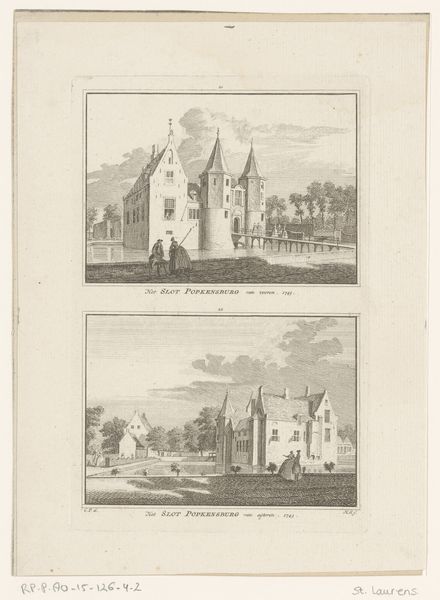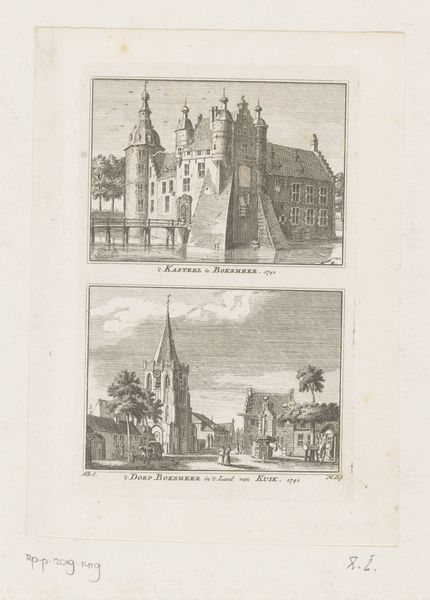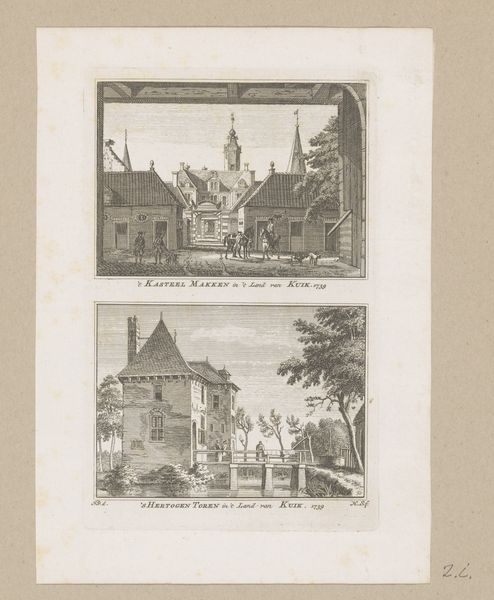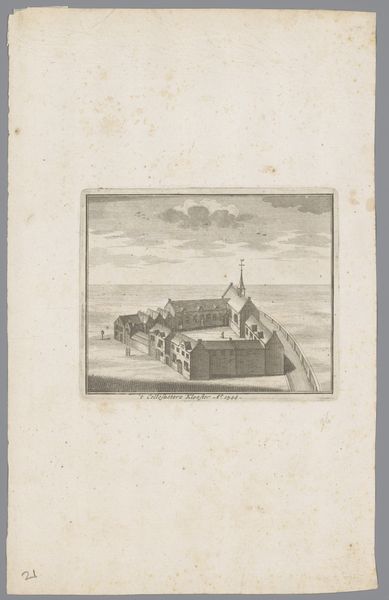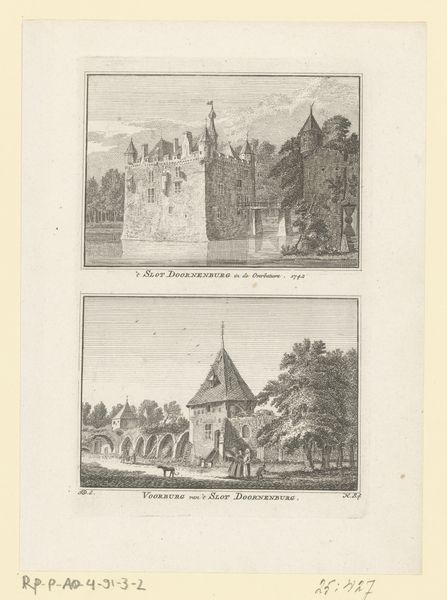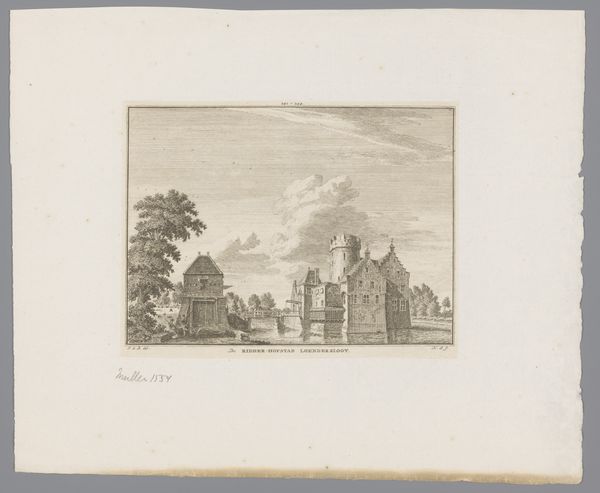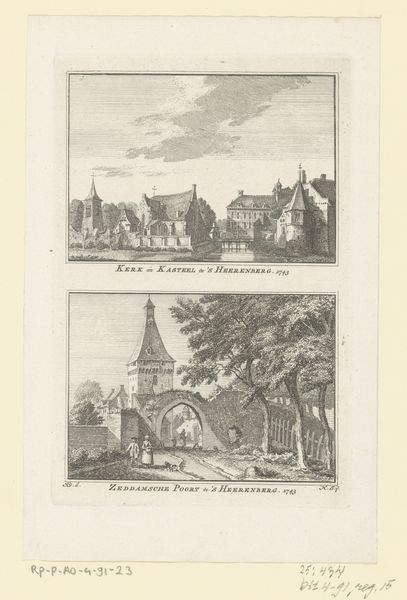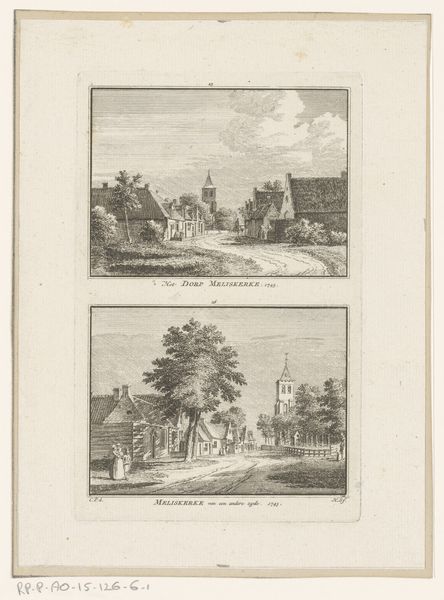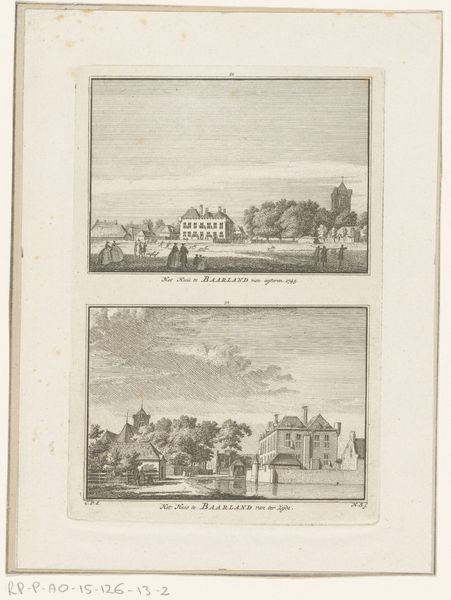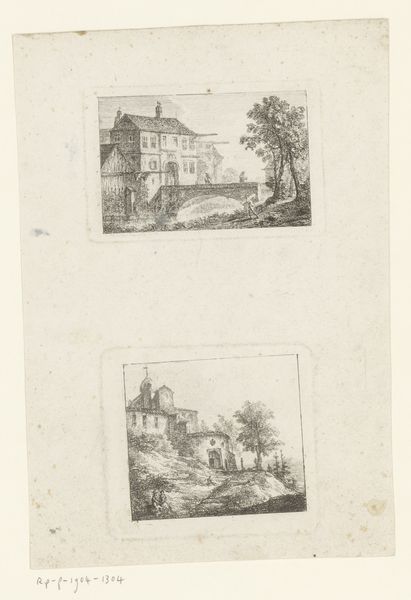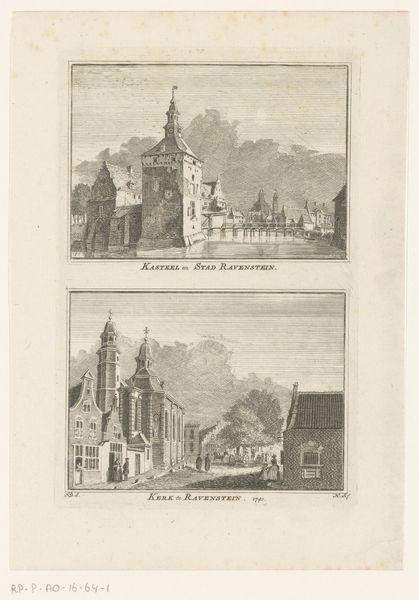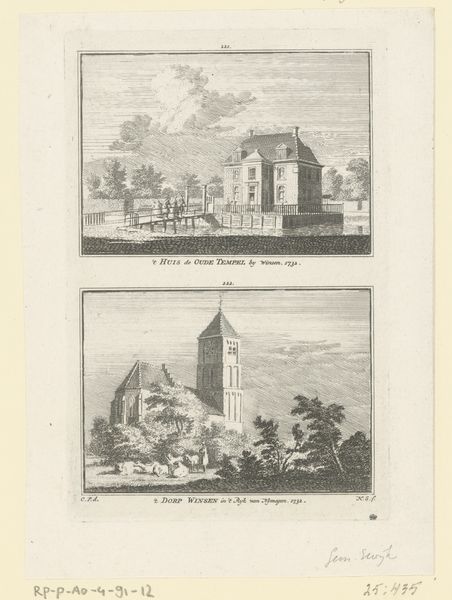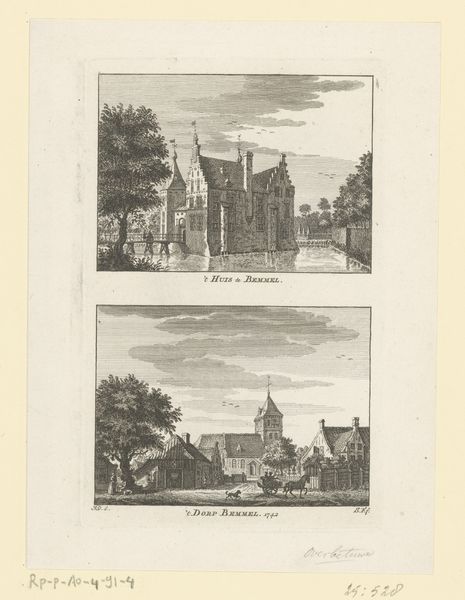
print, paper, engraving
#
dutch-golden-age
# print
#
traditional media
#
landscape
#
paper
#
cityscape
#
engraving
Dimensions: height 174 mm, width 107 mm
Copyright: Rijks Museum: Open Domain
Curator: Hendrik Spilman's "Gezichten op het Kasteel IJsselstein," made sometime between 1745 and 1774, gives us two meticulously engraved views of this Dutch castle. It's currently held here at the Rijksmuseum. Editor: It strikes me as so serene. Even with the intricate detail, there's a calming stillness in the landscape and the reflected images in the water. What does this castle represent at the time this image was created? Curator: The Castle IJsselstein, depicted here, speaks to a period of Dutch history defined by shifting power dynamics and social hierarchies. Spilman’s engraving gives insight into the architectural tastes of the Dutch elite and reflects broader conversations around landscape, ownership and representation that characterized the era. Prints like this circulated widely, impacting ideas about prestige. Editor: The dual perspectives are compelling; almost as if the building had different personalities based on its view. I'm also drawn to the contrast between the sturdy, angular castle and the soft, almost dreamy treatment of the clouds and surrounding foliage. It evokes a feeling of permanence against the ephemeral. I wonder if Spilman was thinking of symbols like "the rock," something like that. Curator: Precisely, the symbolism and careful composition underscore the social narratives at play. Also, don't overlook how institutions like the Rijksmuseum continue shaping narratives around historical artworks. Our very act of exhibiting Spilman's print participates in defining its cultural meaning. Editor: It really does give you something to think about – How images like these shape our memory! And, yes, our own influence as interpreters certainly plays a role. Curator: Indeed. Each time someone views it, its meaning evolves within new social contexts.
Comments
No comments
Be the first to comment and join the conversation on the ultimate creative platform.
